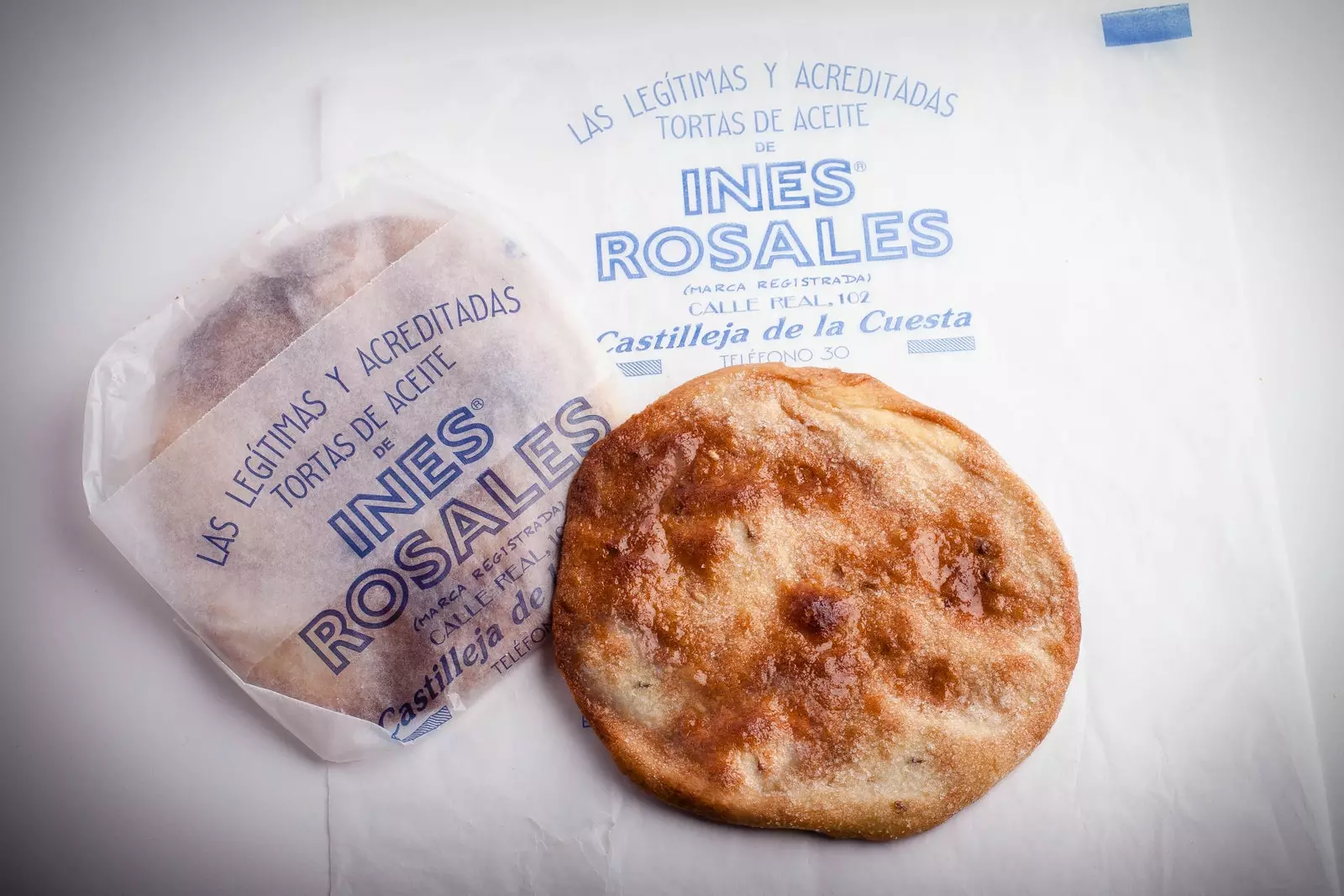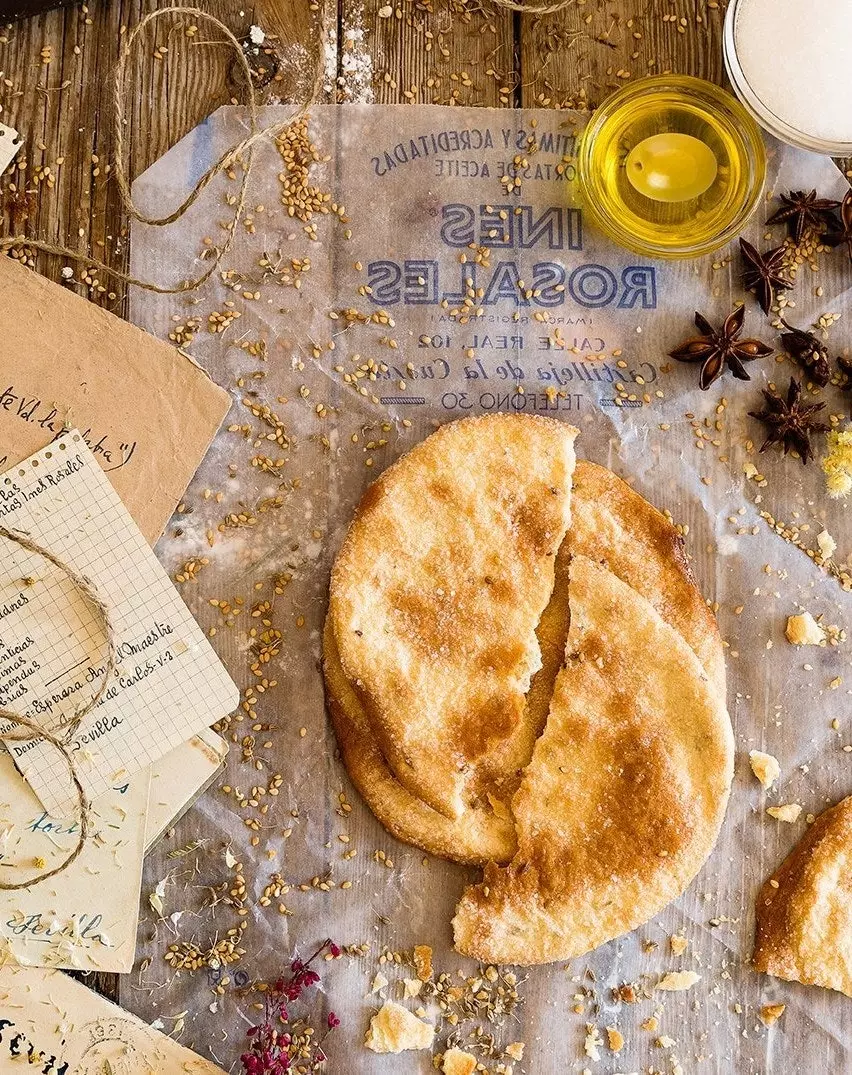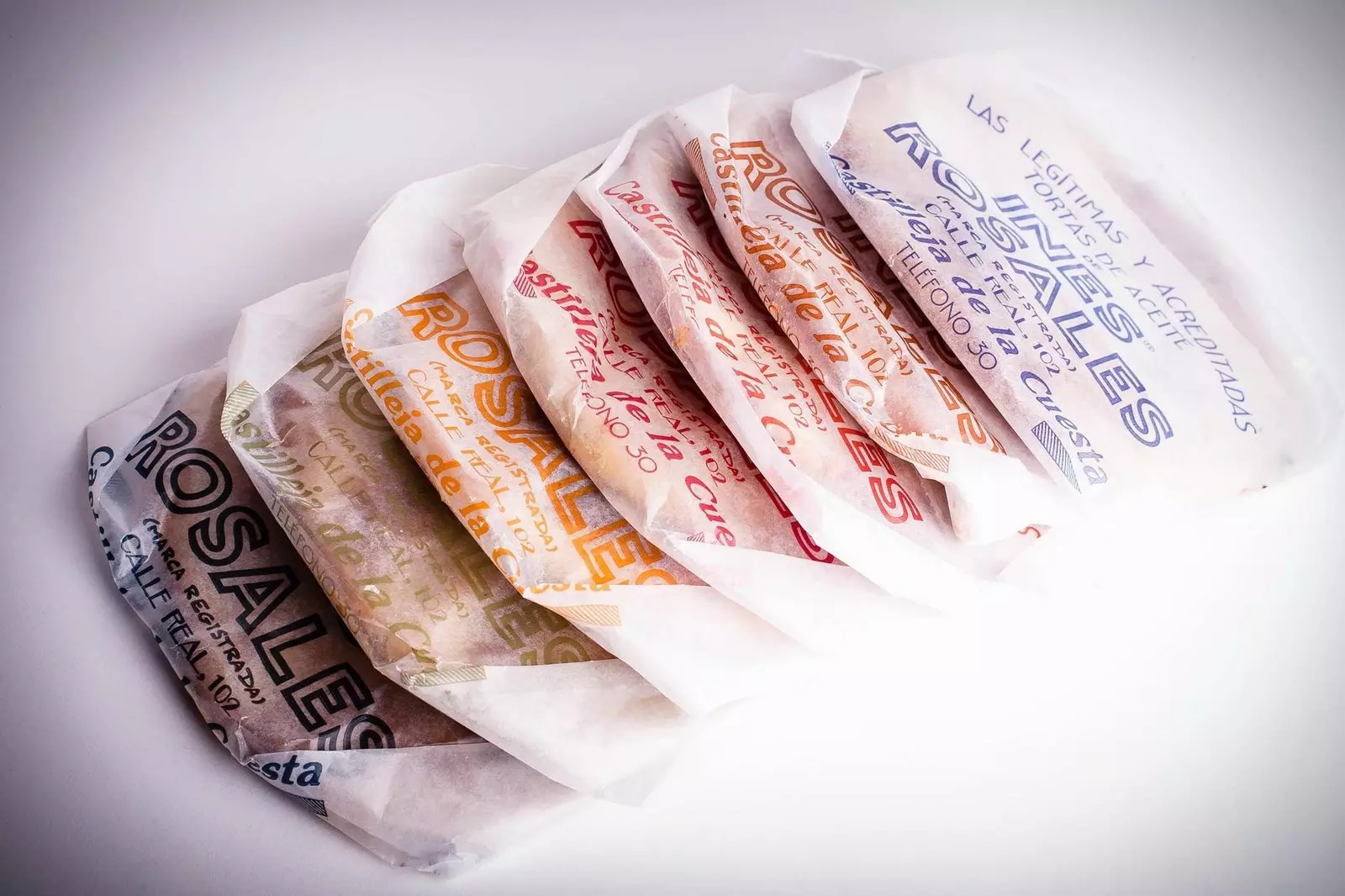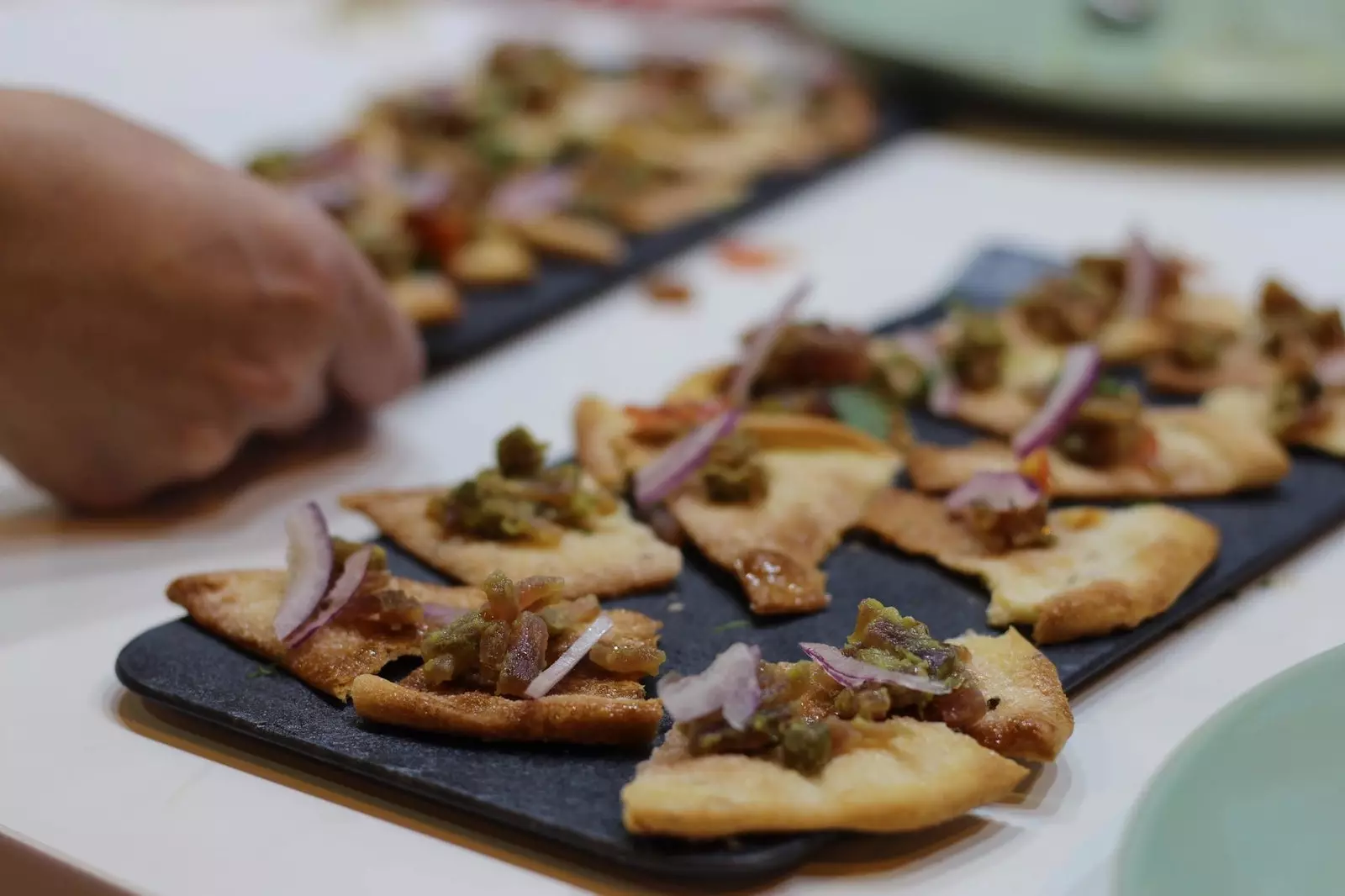
Oil cakes: from Castilleja de la Cuesta to the global pantry
The wrapper opens with care. Spread out and serve as a plate. Then comes the crag! The oil cake splits. Crunchy. It is followed by yum, yum, yum. Finally, the index finger is brought to the tongue, it is moistened and the mijitas that have remained on the paraffin paper are collected. "It's like a ritual," says one of the managers of Upita de Los Reyes, Lola de los Reyes. "Opening the piece of paper is a celebration that is part of a ceremony that each person makes intimate," says Ana Moreno, in charge of institutional relations at Inés Rosales. “We wish you a good day and that you enjoy this moment of reunion with the authentic”, pray the message of these cakes.
at the beginning of the 20th century the residents of the Sevillian municipality of Castilleja de la Cuesta consumed the oil cakes during the Easter festivities. But the popularity of this light sweet, with a thin, flaky pastry and a characteristic olive oil flavour, spread first to the western part of Andalusia and later to the entire Spanish territory. “It is a non-perishable product that is kept at room temperature. This was key to the boom at the beginning of the last century”, says Lola. “It is a product that travels very well”, highlights Ana, who points to the “democratization of a gourmet product” as another reason for its dissemination.

Inés Rosales began in 1910 to make some traditional sweets from Aljarafe called Tortas de Aceite, following a traditional recipe.
RETURN TO THE ORIGIN
Both Lola and Ana, in charge of communication for their companies, know the natural and cultural attributes of a sweet that has become an example of the recovery of traditional recipes.
It all started thanks to two Castillejan women, first cousins: Inés Rosales Hair and Dolores Cansino Rosales. While the first began in 1910 as "one of the first businesswomen of her time", Dolores made sweets in her house. Each one, in her own way, ** baked the story of a product that has carved out a niche for itself in the global pantry. **
These pioneers gave prominence to a formula that has been passed down from generation to generation. Made and rolled by hand, there is no oil cake like it. The artisan elaboration is one of the signs of identity of a sweet that does not have additives, neither lactose nor egg. Great-grandmother Dolores's recipe has not changed: "Extra virgin olive oil, yeast, salt, water, sugar and aromatic spices such as matalauva and sesame”, lists Lola.
The five De los Reyes sisters “carry in their blood” a tradition that her mother, Luisa Millán, turned into a family business in 1983. It is the only oil cake factory that remains in Castilleja de la Cuesta. In 1991 Inés Rosales, already under the direction of Juan Moreno, moved to the nearby town of Huévar del Aljarafe, although her headquarters are still on Calle Real in the town of its founder. “It is an act of responsibility that we have,” says Ana.

Varieties of oil cakes by Inés Rosales.
**INTERNATIONAL DEMAND**
United States, United Kingdom, Germany, France, Sweden and lately it is sold 'to the limit' in Finland. Oil cakes have crossed the Spanish borders . "The craftsmanship shows in the cake and that is highly valued abroad," says Lola.
"The love and care they are universal values that have fallen in love with the countries in which we sell”, points out Ana. Inés Rosales catapulted the name of Castilleja de la Cuesta thanks to the European certification of Guaranteed Traditional Specialty (ETG) . They now trade in 38 markets.
The arrival in different countries has made the product diversify. In places where the snack is not so established, the oil cake is no longer accompanied by coffee and is eaten with pâtés or cheeses. Beyond the orange, almond and cinnamon variants, the adaptation to the palates of new consumers has led to the development of savory rosemary and sesame cakes and sea salt.
The salty oil cake has also found its public in Spain. It has entered restaurant menus as an appetizer. Despite this new use, Ana claims the protection of a pastry heritage: “We are a cake. Not a snack, not a biscuit or a cracker. We have our own name and it is a universal language.”

There are those who use them as a base for salty appetizers, such as this mojama with tuna, capers, red onion and olive oil.
On the path of internationalization, Ana remembers the time and money invested in R&D to search for new flavors while Lola sees in exporting an opportunity for future lines of work. Her companies maintain the tradition that Inés and Dolores recovered and that today bear the name of Castilleja de la Cuesta around the world. But they are not complacent and they know that they still have a lot of work ahead of them.
“Do you have much left?”, She hears herself through the telephone line. It is Luisa Millán who, despite being retired, is still 'the boss' of the workshop of oil cakes from Upita de los Reyes. "It's her life," says her daughter, Lola. "Well, I won't keep you any longer because there are many cakes to make." And what to enjoy.
